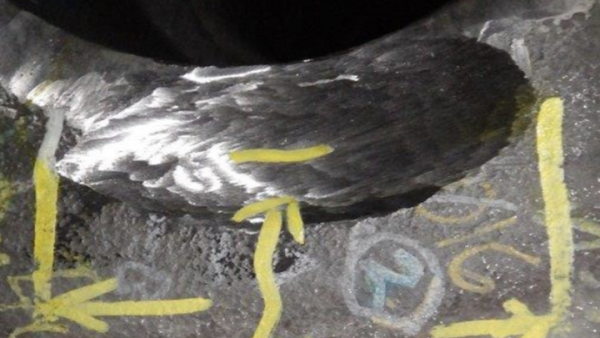Sulfide Stress Cracking (SSC) is a form of wet hydrogen sulfide (H2S) damage occurring when atomic hydrogen diffuses into high-strength alloys and steels in areas of high internal stress, such as grain boundaries, inclusions, and regions of triaxial stress at notches. When placed in proximity to tensile stresses, embrittlement and the beginnings of brittle fracture may occur.
Areas Susceptible to SSC
Sulfide stress cracking usually initiates on the surface of high-strength steels in high-hardness regions such as weld deposits and heat affected zones (HAZ). Welds that have not received post weld heat treatment (PWHT) are prone to SSC due to elevated tensile residual stresses and lack of tampering/softening of the weld deposit and HAZ.
In general, high-strength steels are more susceptible to SSC than lower-strength steels such as typical pressure vessel carbon steels. However, pressure vessel steels that are inherently resistant to SSC can become susceptible through improper welding.
Under certain operating conditions, SSC can rapidly lead to extensive cracking and ultimately failure.
SSC Prevention/Mitigation
As sulfide stress cracking is often driven by tensile weld residual stresses near weld deposits and high-hardness welds, and HAZs increase the propensity for SSC, specifying PWHT during the equipment design/fabrication phase can help mitigate this damage.
Additional mitigation strategies include, but are not limited to:
- Establishing favorable mechanical design characteristics, such as avoiding sharp corners and stress concentrations
- Controlling steel material properties/cleanliness, chemistry, and microstructure
- Engineering repair welds with appropriate PWHT, hydrogen bake-outs, and hardness checks
- Using reasonable inspection intervals
- Avoiding internal surface inspection that requires significant cleaning/surface preparation
- Using cladding, weld overlay, or other barriers between the service environment and the steel
- Injecting water wash or corrosion inhibitor into the process stream
SSC Inspection
Some of the commonly used nondestructive testing (NDT) methods for detecting and characterizing SSC include:
- Visual inspection of internal coatings or cladding issues
- Wet fluorescent magnetic particle testing (WFMT), which is sensitive enough to detect surface breaking cracks and is preferred for discovering SSC damage near welds
- Ultrasonic Testing (UT)
- Other techniques such as acoustic emission testing (AET), alternating current field measurement (ACFM), and eddy current testing (ECT).
References
- Prueter, P., 2021, “Damage Control: Wet H2S Damage Detection,” Inspectioneering Journal, 27(5), pp. 45-52.
Related Topics
- Hydrogen Blistering
- Hydrogen Induced Cracking (HIC)
- Stress-Oriented Hydrogen Induced Cracking (SOHIC)
Relevant Links
Topic Tools
Share this Topic
Contribute to Definition
We welcome updates to this Integripedia definition from the Inspectioneering community. Click the link below to submit any recommended changes for Inspectioneering's team of editors to review.
Contribute to Definition


















